Overview
This article presents a comprehensive overview of essential EMR systems for healthcare providers, emphasizing their distinctive features and benefits tailored to diverse medical environments. Notable systems such as Epic, Cerner, and Meditech are examined in detail, focusing on their functionalities, user experience, and significant contributions to patient care. This analysis underscores the increasing necessity for customization and interoperability, which are pivotal in enhancing healthcare delivery. As the landscape of healthcare technology evolves, understanding these systems becomes imperative for providers aiming to optimize their operations and improve patient outcomes.
Introduction
As the healthcare landscape evolves, the demand for effective electronic medical record (EMR) systems is more critical than ever. Providers are increasingly seeking solutions that not only enhance patient care but also streamline workflows and improve data management. This article delves into nine essential EMR systems tailored for healthcare providers, showcasing their unique features and benefits. However, with a plethora of options available, how can healthcare organizations discern which system best aligns with their specific needs and challenges?
SDA: Custom Software Development for Tailored EMR Solutions
SDA excels in creating tailored solutions from the EMR systems list specifically designed to meet the diverse needs of medical providers. By utilizing advanced technologies and adhering to user-focused design principles, SDA's EMR systems list significantly enhances care quality, streamlines workflows, and improves data management. Their dedicated development teams collaborate closely with healthcare organizations to thoroughly understand unique requirements, resulting in tailored solutions that drive operational efficiency and ensure compliance with healthcare regulations.
Recent trends underscore a growing emphasis on user-focused design within the EMR systems list, particularly in enhancing usability and user involvement. As we approach 2025, the integration of intuitive interfaces and personalized features in the EMR systems list is becoming increasingly essential, signaling a shift towards solutions that prioritize user experience. This approach not only facilitates improved data management but also elevates the overall provided to individuals. Notably, the EHR market is projected to reach $30.1 billion in 2025, which emphasizes the rising demand for user-centric solutions found in the EMR systems list.
Successful implementations of customized EMR solutions have demonstrated significant advantages, including enhanced management of chronic illnesses and improved monitoring of health outcomes. For instance, medical providers utilizing user-focused EMR solutions have reported substantial improvements in operational efficiency and patient satisfaction, with research indicating that EHR platforms positively influence the quality and effectiveness of medical delivery.
Experts in medical technology emphasize the importance of user-focused design, asserting that it plays a crucial role in the acceptance and efficiency of the EMR systems list. According to the Office of the National Coordinator for Health Information Technology (ONC), focusing on end-user requirements enables these frameworks to better support medical professionals in delivering high-quality care, ultimately leading to improved outcomes for patients and more efficient processes within the healthcare sector.

Epic Systems: Comprehensive EMR Solutions for Healthcare Organizations
Epic Systems is recognized as a leader in offering an extensive EMR systems list specifically designed to meet the needs of large medical organizations. This platform integrates various functionalities—including scheduling, billing, and clinical documentation—into a single, cohesive system. With a strong emphasis on , Epic ensures that medical providers can seamlessly exchange patient data, thereby enhancing care coordination and improving patient outcomes.
Notably, reports indicate that Epic accounts for 79% of new EHR hospital deals from 2017 to 2022, underscoring its significant market dominance. Furthermore, Epic's commitment to user experience results in EMR solutions that are both intuitive and efficient, making them a preferred choice among numerous medical institutions.
However, prospective users must also consider challenges such as high implementation costs and the complexity of setup, which may necessitate considerable IT support. Effective implementations, exemplified by the Epic Welcome Kiosk, showcase the platform's ability to optimize scheduling and billing operations, demonstrating its capacity to meet the intricate demands of modern medical environments.
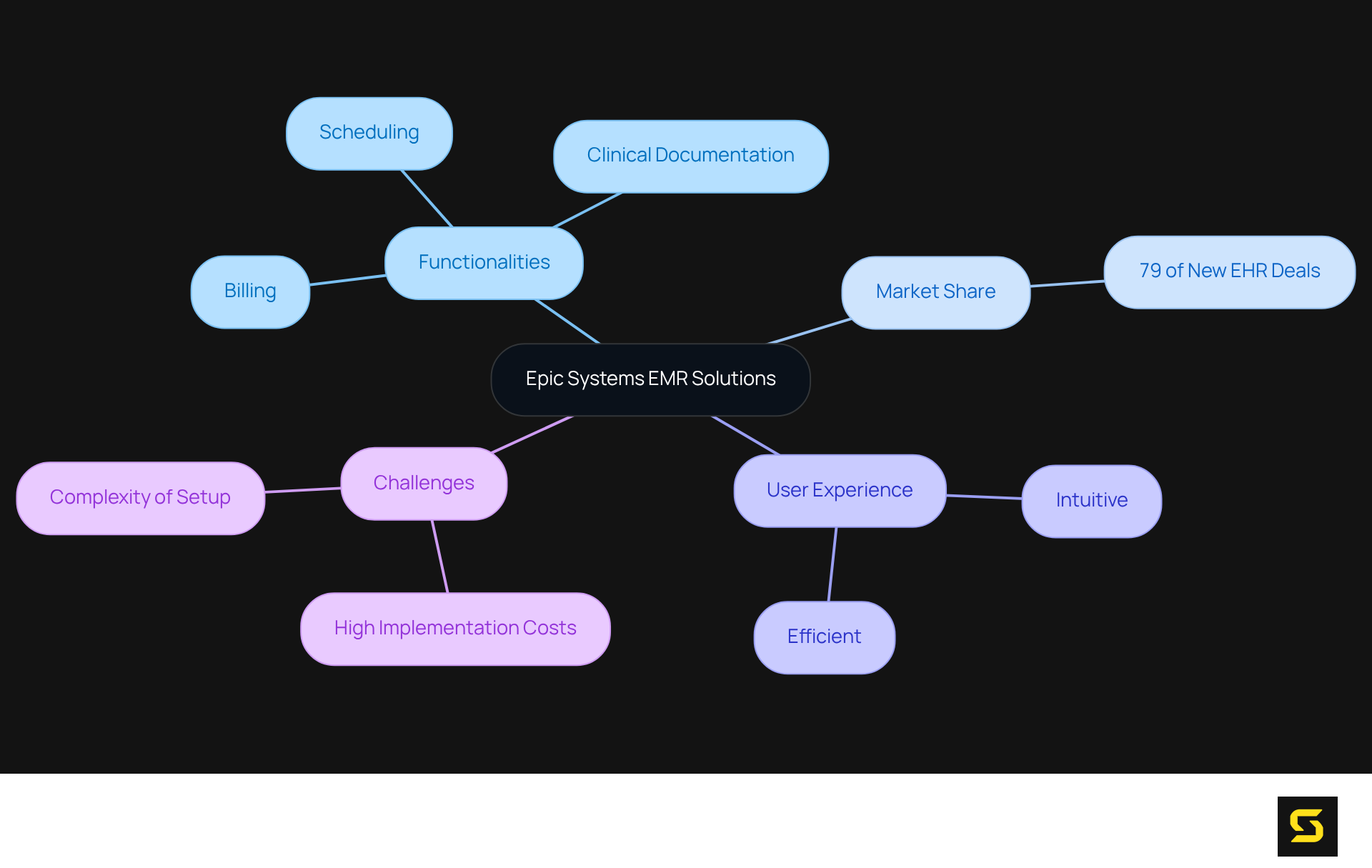
Cerner: Advanced EMR System for Enhanced Patient Care
Cerner's EMR platform stands at the forefront of healthcare delivery, engineered to enhance the quality of care through advanced clinical decision support tools and analytics. This platform empowers medical providers by granting access to comprehensive client records, facilitating informed decision-making precisely at the moment of treatment.
With a strong focus on , Cerner ensures seamless communication across diverse medical networks, making individual information readily available whenever necessary.
Moreover, the platform's intuitive interface is designed to assist clinicians in navigating effectively, thereby alleviating administrative burdens and allowing them to prioritize client well-being.
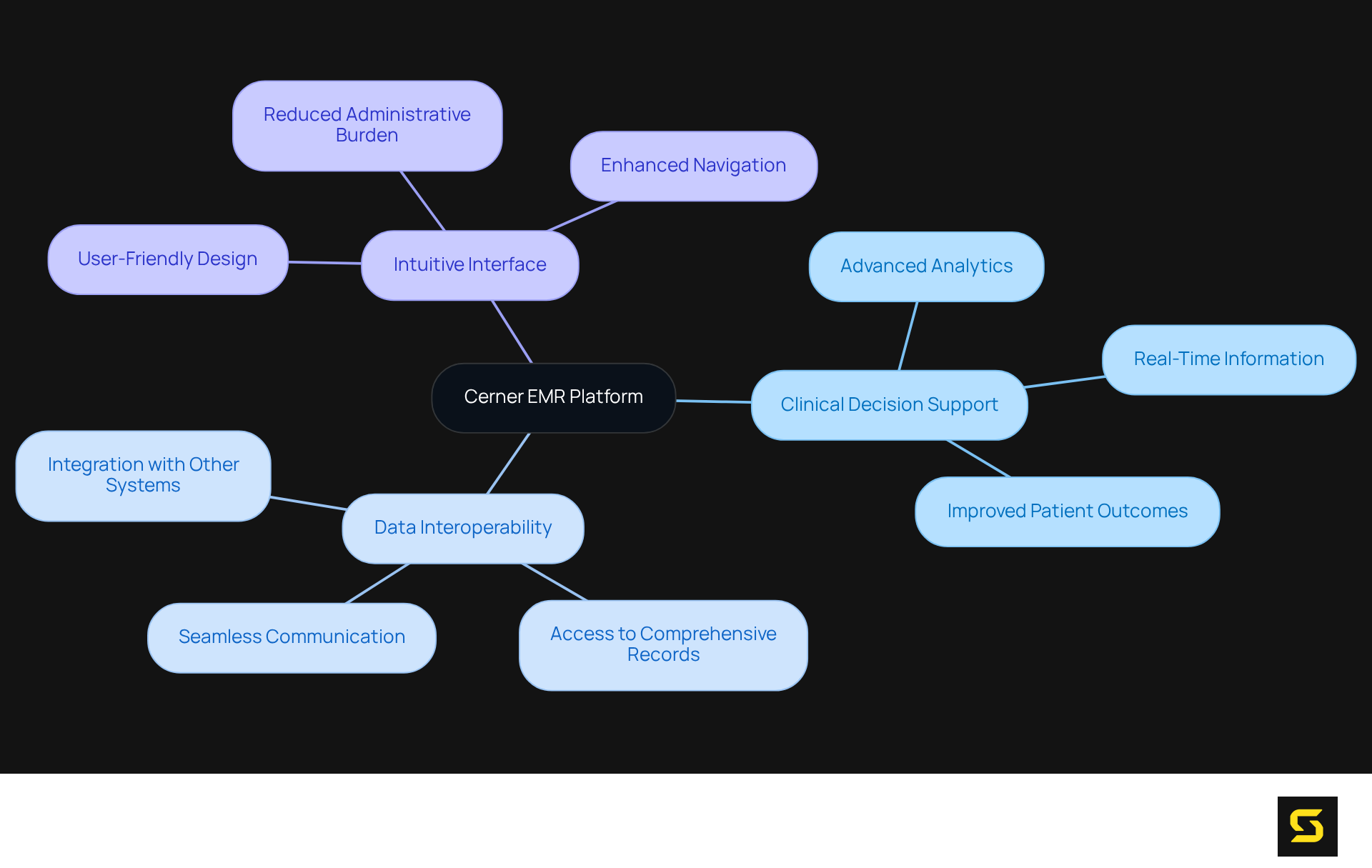
Allscripts: Flexible EMR Solutions for Diverse Healthcare Settings
Allscripts delivers flexible EMR solutions tailored for diverse medical settings, ranging from small practices to expansive hospitals. This platform's customizability empowers providers to modify the framework according to their unique workflows and client needs. Such flexibility is vital; 88% of medical providers utilizing Health Information Exchanges (HIEs) reported . Conversely, 53% of providers faced challenges with EHR interoperability, underscoring the critical role interoperability plays in achieving coordinated care. Allscripts prioritizes seamless data transfer across various platforms, essential for enhancing user experiences and clinical outcomes. Additionally, features like client engagement tools and advanced analytics allow providers to refine their workflows. Notably, over 90% of medical organizations leverage EHR data for population health management and research initiatives. Medical professionals recognize that customizing the EMR systems list is crucial for meeting the diverse demands of their environments, highlighting the importance of Allscripts' adaptable approach in today's evolving healthcare landscape. As one expert stated, "Tailoring our EMR platform has been crucial in tackling the distinct challenges we encounter, enabling us to deliver improved support to those we serve.
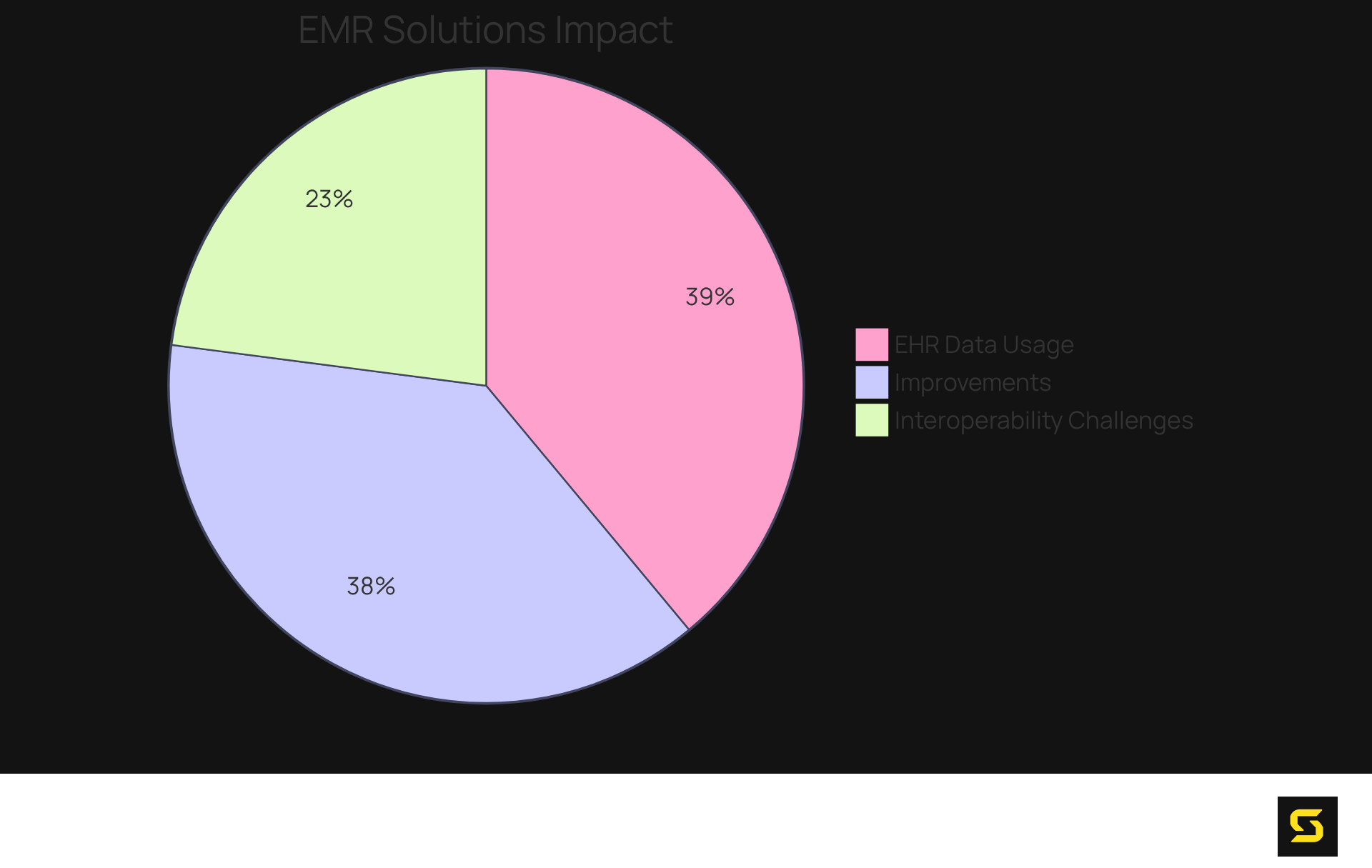
Meditech: User-Friendly EMR Systems for Streamlined Workflows
Meditech's EMR solutions stand as a testament to user-friendliness, empowering healthcare providers to navigate the platform effortlessly. This significantly reduces the learning curve for newcomers, allowing clinicians to concentrate on delivering care rather than grappling with complex technology. By integrating essential features such as clinical documentation, billing, and scheduling into a unified platform, Meditech enhances operational efficiency.
Notably, 75% of providers report spending valuable time on EHR tasks that could be redirected toward client services, underscoring the critical need for user-friendly systems. Medical experts assert that efficient workflows are vital for boosting clinician productivity and satisfaction, ultimately leading to improved experiences for patients receiving care.
Furthermore, a report from Medscape indicates that physicians have experienced advancements driven by EHR systems in managing treatment plans, further underscoring the pivotal role of Meditech's solutions in enhancing health outcomes.

Athenahealth: Cloud-Based EMR Solutions for Enhanced Collaboration
Athenahealth provides cloud-based EMR solutions that are meticulously crafted to significantly enhance collaboration among healthcare providers. By ensuring immediate access to individual information, clinicians can effectively coordinate treatment, irrespective of their physical location. The platform's emphasis on interoperability facilitates seamless data exchange among diverse systems, which is critical for delivering integrated support.
Furthermore, Athenahealth's integrated analytics tools empower healthcare organizations to monitor performance metrics, ultimately yielding improved outcomes for patients. Key features, such as telehealth integration and user engagement tools, enable providers to deliver comprehensive support, fostering a collaborative environment that enhances the overall user experience.
Notably, the adoption of telehealth services surged during the pandemic, escalating from 11% in 2019 to 46% in 2020, underscoring the increasing significance of remote collaboration in healthcare. As Dr. Nele Jessel, chief medical officer, remarked, "Healthcare technology, including EHRs or practice management software, hasn’t always delivered on efficiency, user experience, or many of the benefits once promised to clinicians."
This commitment to collaboration positions Athenahealth as a frontrunner in promoting within the medical field, addressing the intricate needs of specialty practices while also considering the paramount concerns regarding data privacy and security raised by clinicians and patients.
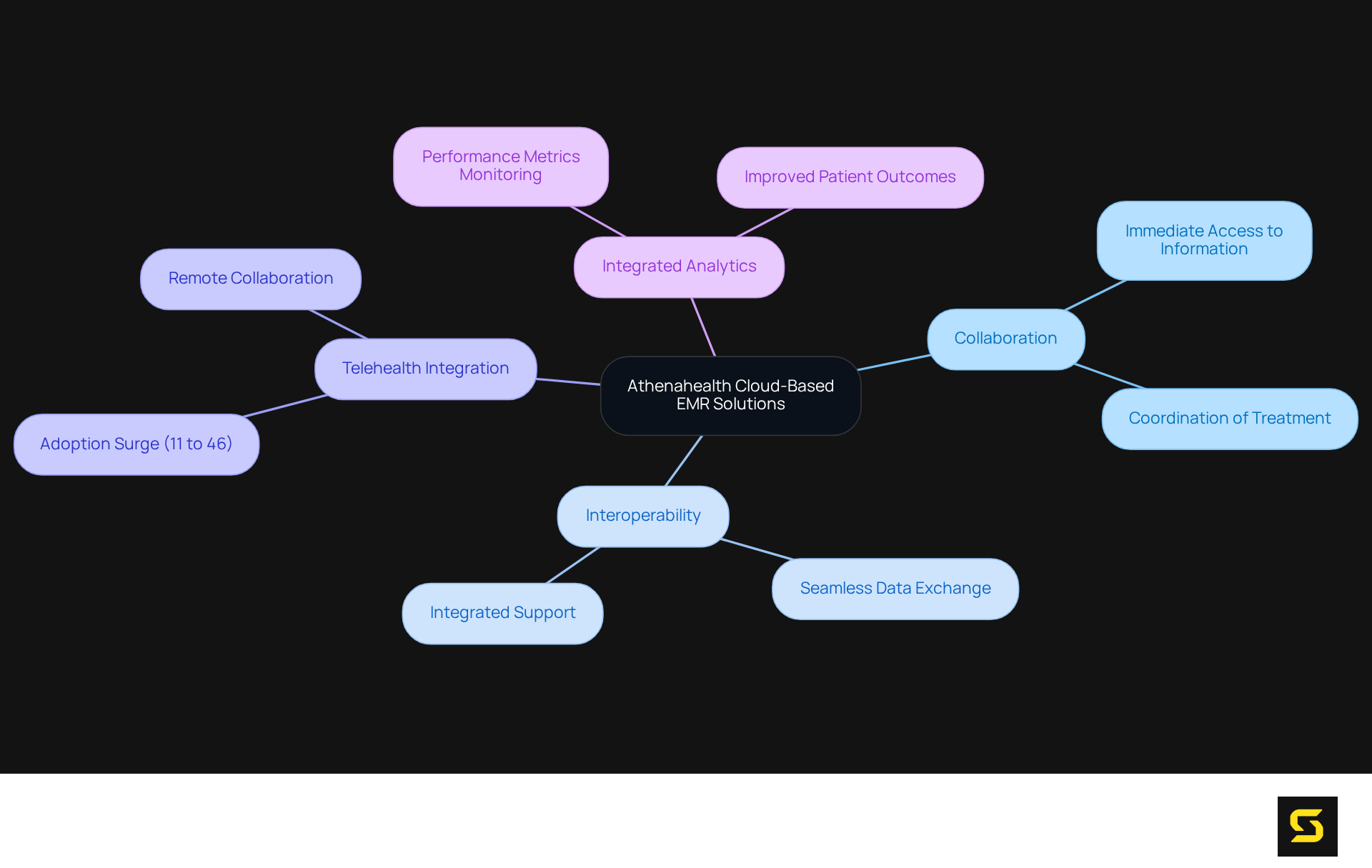
NextGen Healthcare: Integrated EMR Solutions for Patient Engagement
NextGen Healthcare presents integrated EMR solutions that prioritize user engagement and satisfaction. Key features such as individual portals, appointment scheduling, and secure messaging empower individuals to actively participate in their wellness journeys.
As an anonymous quote aptly states, "Individuals don't concern themselves with your knowledge until they realize your concern," this framework fosters a genuine connection between individuals and providers.
NextGen's EMR systems list features an EMR system that is meticulously designed to streamline clinical workflows, enabling medical providers to focus on delivering high-quality care. With advanced reporting and analytics capabilities, NextGen equips organizations to effectively monitor outcomes and enhance service delivery.
These capabilities assist medical providers in understanding and addressing individuals' needs more effectively, ultimately cultivating trust and leading to improved health outcomes and greater adherence to treatment plans.
For medical practitioners, actively listening to individuals and incorporating their feedback into treatment strategies can significantly enhance involvement. This is evidenced by case studies such as 'The Importance of User Experience,' which demonstrates that yields better health results.
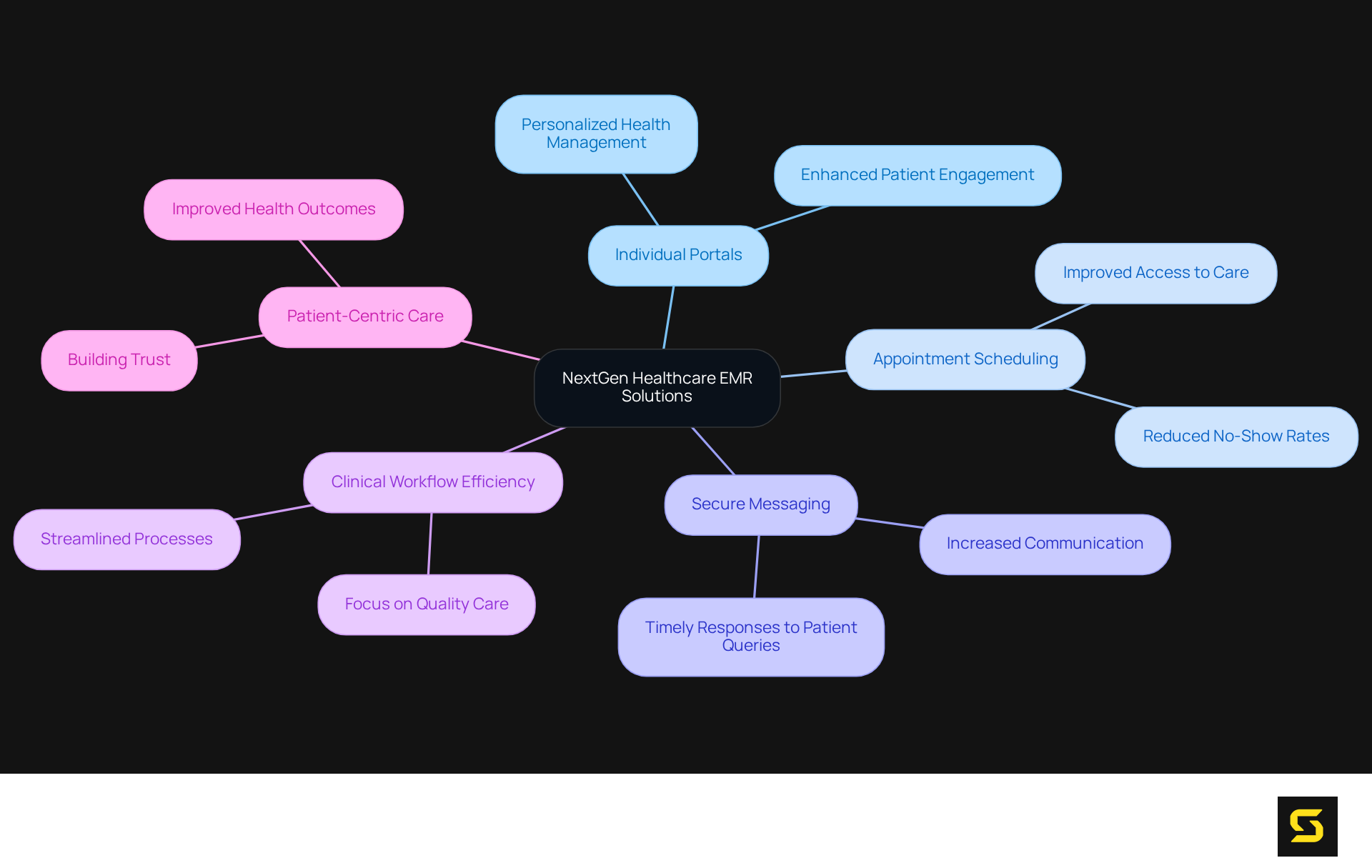
eClinicalWorks: Comprehensive EMR Platform for Diverse Specialties
eClinicalWorks emerges as a leading EMR platform meticulously crafted to address the varied needs of diverse medical specialties. Its customizable templates and workflows empower medical practitioners to tailor the platform to their unique practice requirements, significantly enhancing operational efficiency. The platform's emphasis on facilitates seamless data exchange among multiple medical systems, a vital component for coordinated care.
Notably, 67% of doctors have identified the resolution of interoperability issues as a primary focus for EHRs over the next decade, underscoring the platform's critical role in today's healthcare landscape. Additionally, eClinicalWorks encompasses telehealth features and client engagement tools, positioning it as a versatile solution that resonates with modern medical practices.
Documented success in modifying eClinicalWorks across various practices illustrates its adaptability and effectiveness in improving outcomes and optimizing workflows.
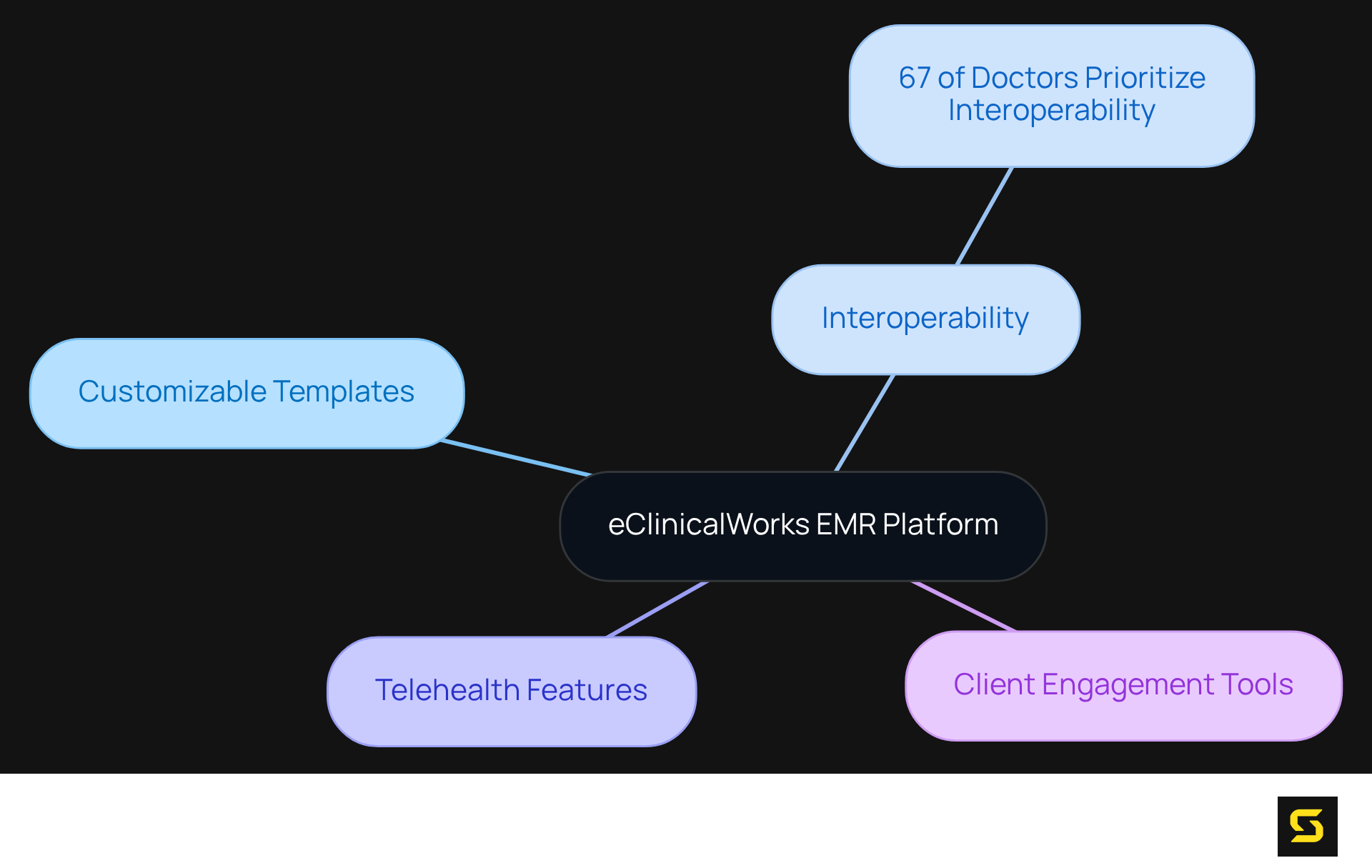
Practice Fusion: Free Cloud-Based EMR for Small Practices
Practice Fusion stands as a premier free cloud-based EMR solution tailored for small practices, currently embraced by around 40,000 doctors and nurses. Its user-friendly interface, alongside essential features like e-prescribing and scheduling, positions it as an attractive option for medical providers aiming to cut costs while delivering quality care. The platform’s cloud-based architecture facilitates seamless access to medical records from any location, thereby enhancing collaboration among care teams.
Recognized for its swift implementation and , Practice Fusion does encounter challenges regarding scalability and integration—critical factors for prospective users. Furthermore, the strategic partnership between Dell and Practice Fusion is designed to bolster small practices by offering affordable hardware and training, thereby amplifying the platform’s appeal.
By prioritizing simplicity and efficiency, Practice Fusion empowers small practices to optimize their operations without the encumbrance of high software costs, making it a compelling choice for those seeking to elevate service delivery while effectively managing expenses.
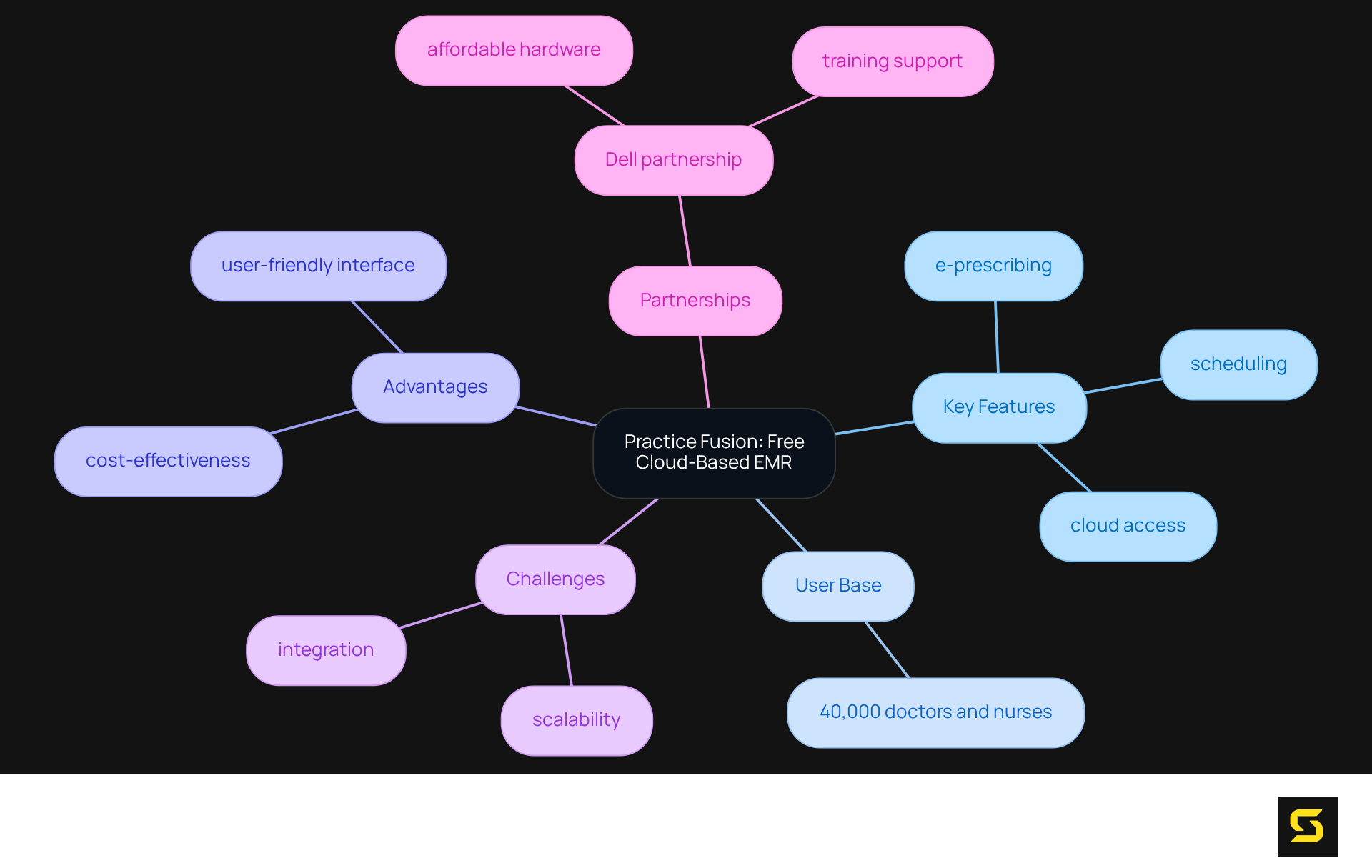
Greenway Health: Customizable EMR Solutions for Unique Provider Needs
Greenway Health delivers highly customizable EMR solutions tailored to the distinct needs of diverse healthcare providers. With extensive , the platform allows practices to adapt workflows, templates, and reporting features, ensuring alignment with their specific operational requirements. This flexibility is crucial; 75% of providers report that time spent on EHR tasks disrupts patient treatment, underscoring the urgent need for effective solutions.
Interoperability stands as a cornerstone of Greenway's offerings, enabling seamless data sharing across various systems to enhance care coordination. As medical professionals increasingly prioritize interoperability—67% identify it as a top concern for the next decade—Greenway's solutions are strategically positioned to tackle these challenges.
Moreover, the integration of client engagement tools and advanced analytics empowers healthcare providers to improve outcomes and operational efficiency. By customizing the EMR systems list to align with their unique workflows, providers can significantly boost productivity, ultimately leading to enhanced care delivery and increased patient satisfaction.
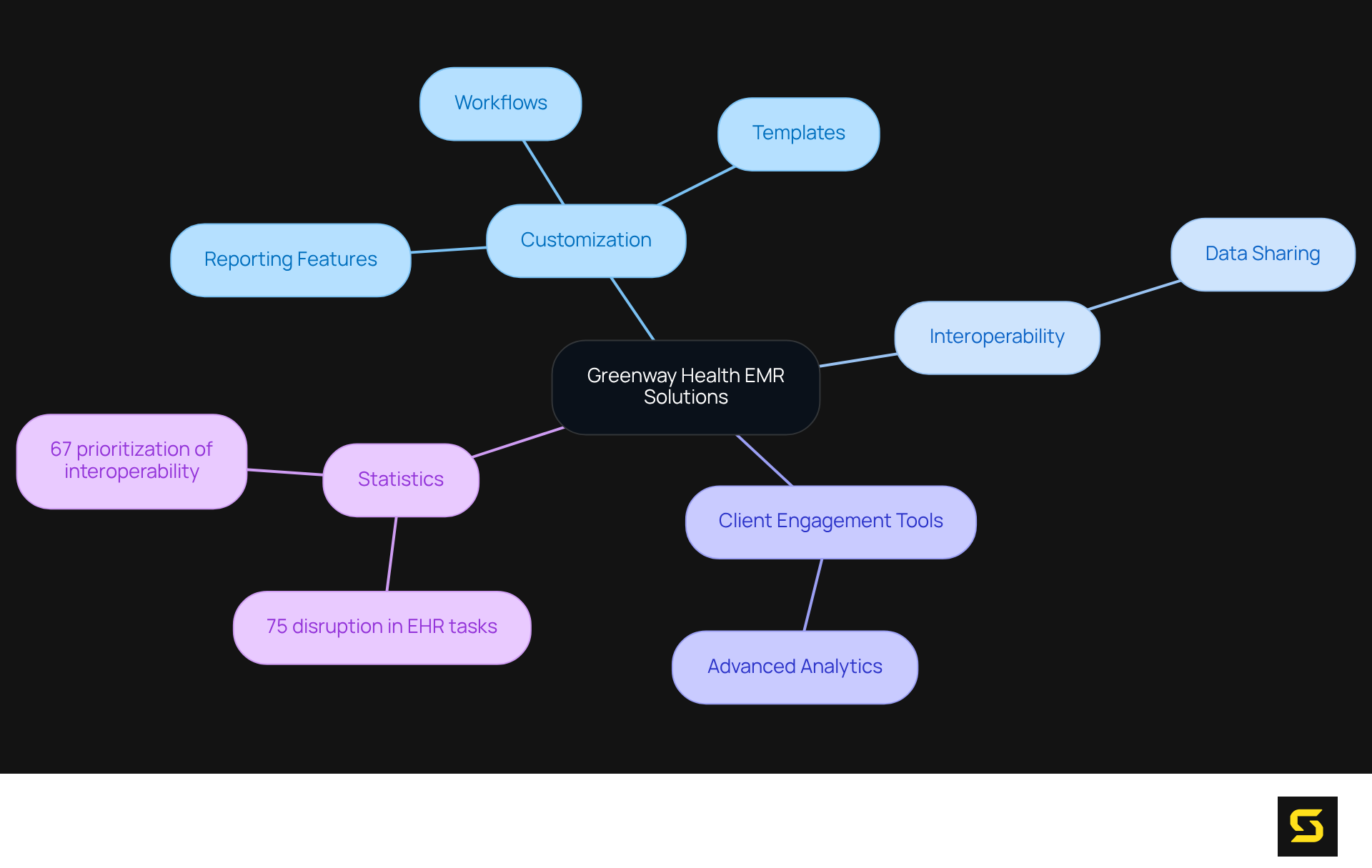
Conclusion
The exploration of essential EMR systems underscores the critical role that tailored solutions play in enhancing healthcare delivery. By prioritizing user-centric design and advanced functionalities, these systems not only streamline workflows but also significantly improve patient care outcomes. As healthcare providers navigate the complexities of modern medical environments, adopting the right EMR solution becomes paramount for operational success and compliance with evolving regulations.
Throughout this analysis, various EMR platforms, including SDA, Epic Systems, Cerner, Allscripts, Meditech, Athenahealth, NextGen Healthcare, eClinicalWorks, Practice Fusion, and Greenway Health, have been examined. Each system presents unique features that cater to diverse healthcare settings, from customizable templates to cloud-based solutions that facilitate collaboration. The emphasis on interoperability and user engagement highlights the growing demand for systems that not only meet clinical needs but also enhance the overall experience for both providers and patients.
In conclusion, the landscape of EMR systems is evolving rapidly, and healthcare providers must remain informed about the latest advancements and trends. By prioritizing user-focused solutions, organizations can improve care coordination, boost operational efficiency, and ultimately enhance patient satisfaction. As the healthcare industry continues to embrace technology, the adoption of effective EMR systems will be crucial in meeting the challenges of tomorrow's healthcare environment.
Frequently Asked Questions
What is SDA's approach to custom software development for EMR solutions?
SDA excels in creating tailored EMR solutions by utilizing advanced technologies and user-focused design principles, enhancing care quality, streamlining workflows, and improving data management.
How does SDA ensure that their EMR solutions meet the unique needs of medical providers?
SDA's dedicated development teams collaborate closely with healthcare organizations to thoroughly understand their unique requirements, resulting in tailored solutions that drive operational efficiency and ensure compliance with healthcare regulations.
What recent trends are influencing the design of EMR systems?
There is a growing emphasis on user-focused design, particularly in enhancing usability and user involvement. The integration of intuitive interfaces and personalized features is becoming increasingly essential as we approach 2025.
What are the projected market trends for the EHR market by 2025?
The EHR market is projected to reach $30.1 billion by 2025, highlighting the rising demand for user-centric solutions in EMR systems.
What advantages have been demonstrated through successful implementations of customized EMR solutions?
Customized EMR solutions have shown significant advantages, including enhanced management of chronic illnesses, improved monitoring of health outcomes, increased operational efficiency, and higher patient satisfaction.
What role does user-focused design play in the acceptance of EMR systems?
User-focused design is crucial for the acceptance and efficiency of EMR systems, as it helps ensure that these frameworks better support medical professionals in delivering high-quality care.
What is Epic Systems known for in the EMR market?
Epic Systems is recognized as a leader in offering extensive EMR solutions designed for large medical organizations, integrating functionalities like scheduling, billing, and clinical documentation into a cohesive system.
What is the market dominance of Epic Systems in recent years?
Epic accounts for 79% of new EHR hospital deals from 2017 to 2022, indicating its significant market presence.
What challenges might users face when implementing Epic Systems?
Prospective users may encounter challenges such as high implementation costs and the complexity of setup, which could require considerable IT support.
How does Cerner's EMR platform enhance patient care?
Cerner's EMR platform enhances care quality through advanced clinical decision support tools and analytics, providing medical providers with access to comprehensive client records for informed decision-making.
What is the focus of Cerner's EMR platform regarding data interoperability?
Cerner emphasizes data interoperability to ensure seamless communication across diverse medical networks, making individual information readily available when necessary.
How does Cerner's interface benefit clinicians?
Cerner's intuitive interface assists clinicians in navigating effectively, reducing administrative burdens and allowing them to prioritize client well-being.





